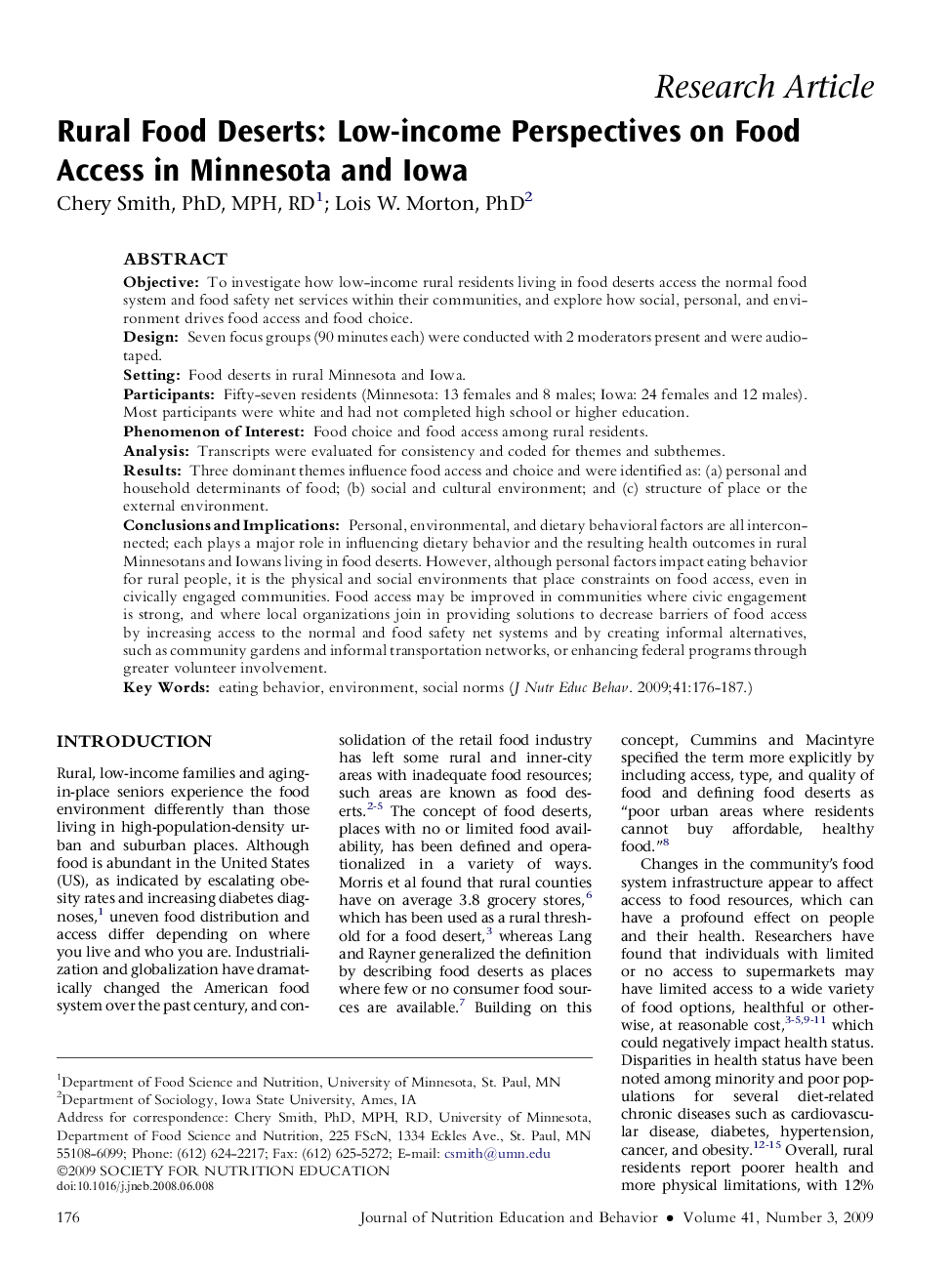| Article ID | Journal | Published Year | Pages | File Type |
|---|---|---|---|---|
| 363152 | Journal of Nutrition Education and Behavior | 2009 | 12 Pages |
ObjectiveTo investigate how low-income rural residents living in food deserts access the normal food system and food safety net services within their communities, and explore how social, personal, and environment drives food access and food choice.DesignSeven focus groups (90 minutes each) were conducted with 2 moderators present and were audiotaped.SettingFood deserts in rural Minnesota and Iowa.ParticipantsFifty-seven residents (Minnesota: 13 females and 8 males; Iowa: 24 females and 12 males). Most participants were white and had not completed high school or higher education.Phenomenon of InterestFood choice and food access among rural residents.AnalysisTranscripts were evaluated for consistency and coded for themes and subthemes.ResultsThree dominant themes influence food access and choice and were identified as: (a) personal and household determinants of food; (b) social and cultural environment; and (c) structure of place or the external environment.Conclusions and ImplicationsPersonal, environmental, and dietary behavioral factors are all interconnected; each plays a major role in influencing dietary behavior and the resulting health outcomes in rural Minnesotans and Iowans living in food deserts. However, although personal factors impact eating behavior for rural people, it is the physical and social environments that place constraints on food access, even in civically engaged communities. Food access may be improved in communities where civic engagement is strong, and where local organizations join in providing solutions to decrease barriers of food access by increasing access to the normal and food safety net systems and by creating informal alternatives, such as community gardens and informal transportation networks, or enhancing federal programs through greater volunteer involvement.
